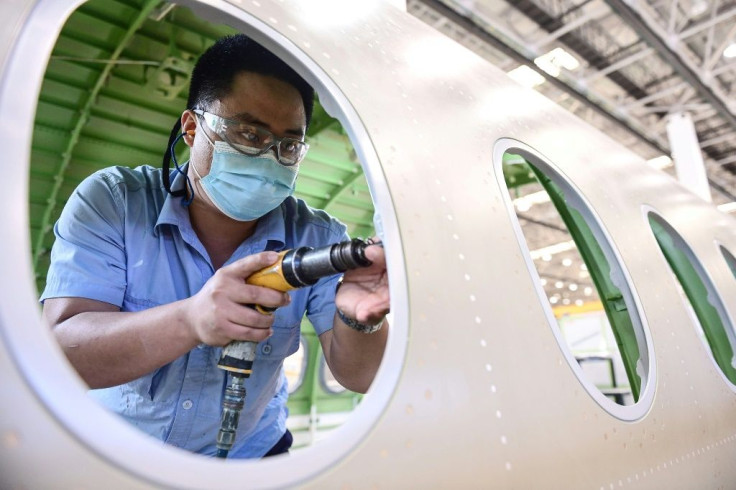China Factory Activity Slows As Global Slump Drags On Growth
Factory activity in China expanded at a slower pace in May as the country attempts to get back on track after the coronavirus, official data showed Sunday, with the global economic slump making the sector's recovery difficult.
China's factories have stirred back to life after the lifting of strict lockdown measures imposed when the deadly virus surfaced in the central city of Wuhan, but its spread worldwide has dragged down key foreign markets -- weighing heavily on Chinese exports.
The Purchasing Managers' Index (PMI), a key gauge of activity in China's factories, was at 50.6 points in May, remaining above the 50-point mark separating growth from contraction each month.
But the figure was down slightly from 50.8 the month before, and 52.0 in March, according to the National Bureau of Statistics (NBS).
NBS senior statistician Zhao Qinghe pointed to weakness in China's imports and exports, saying "the epidemic situation and economic situation globally remain severe and complex, and foreign market demand is still shrinking".
Zhao said indexes on new export orders and imports remained at relatively low levels.
The "momentum of economic recovery is steady and improving", Zhao added, but there is weakness in some industries such as textiles and apparel.
Non-manufacturing PMI was at 53.6 in May, a slight increase from the month before, with the NBS flagging that the construction and service industries are showing signs of recovery.
Business activity in the cultural, sports and entertainment industry, however, remains low with many entertainment venues still closed amid fears of a second wave of COVID-19 infections.
Nomura analysts said in a report this week that "with economic growth in the major economies of Europe and the Americas set to drop by around 15 percent year-on-year in the second quarter, China's exports seem poised to fall".

They added that even with exports of coronavirus-related medical supplies providing a boost in recent weeks, this is not likely to offset external challenges.
It is also likely to be "unsustainable" as new cases peak and more countries ramp up their own production of goods, they said.
Economists flagged concerns around employment, with UOB head of research Suan Teck Kin noting the employment index for both manufacturing and services were below 50.
He said there is a "need to watch on that, especially with China's official job creation number adjusted downward quite significantly this year".
Premier Li Keqiang's annual work report this year at the National People's Congress made stabilising employment a top priority, targeting new urban employment of over nine million -- a drop from 11 million targeted in 2019 -- following the pandemic hit.
Iris Pang, ING chief economist for Greater China, told AFP that the above-50 figure in May suggested "there was some domestic demand pick-up" compensating for weak markets overseas.
Policymakers have long sought to wean China off cheap exports and government spending in favour of domestic consumption, although it is unclear if this will yield results.
But Pang, too, said employment could pose a problem, with a potential trickle-down effect on spending and local demand if job losses grew and domestic sectors could not provide sufficient work for people laid off.
© Copyright AFP 2024. All rights reserved.











